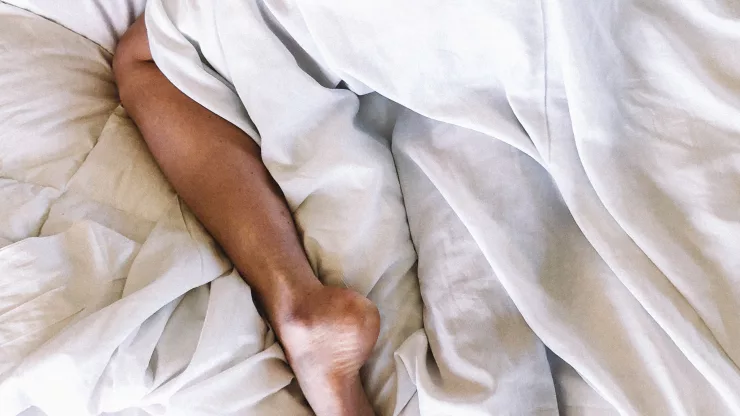Winter can be a tough season for many of us, and it’s not just because of the cold weather and snow.
For some people, winter can bring on a condition called Seasonal Affective Disorder (SAD). SAD is a type of depression that is related to changes in the seasons, and it can make people feel down, tired, and unmotivated.
But the good news is that there are many ways to manage and treat SAD, so you don’t have to suffer in silence.
Jump to Section
Understanding and Managing Seasonal Affective Disorder
What is Seasonal Affective Disorder (SAD)?
Seasonal Affective Disorder (SAD) is a type of depression that is related to changes in the seasons.
It typically starts in the fall and winter months when there is less sunlight, and it can last until spring or early summer.
SAD can affect anyone, but it’s more common in women and people living farther from the equator.
Definition of SAD
SAD is a mood disorder that is characterized by feelings of depression that occur at the same time each year. To be diagnosed with SAD, a person must have experienced at least two consecutive years of seasonal depression that is not related to any other condition or medication.
How SAD is Different from "Winter Blues"
While many people feel a little down during the winter months, SAD is more than just the "winter blues." SAD is a specific type of depression that is related to seasonal changes, and it can be debilitating for some people.
Causes of Seasonal Affective Disorder
Biological Causes
There are several biological factors that can contribute to the development of SAD.
One of the main theories is that changes in the levels of certain neurotransmitters, such as serotonin and melatonin, can affect mood and energy levels.
Additionally, some people may have a genetic predisposition to SAD.
Environmental Causes
Environmental factors can also play a role in the development of SAD. Reduced exposure to sunlight during the winter months can disrupt circadian rhythms and affect the body’s production of serotonin and melatonin.
This can lead to feelings of depression, fatigue, and other symptoms of SAD.
Relationship Between SAD and Melatonin
Melatonin is a hormone that is involved in regulating sleep-wake cycles. Studies have shown that people with SAD may have higher levels of melatonin during the day, which can cause feelings of fatigue and lethargy. Light therapy and other treatments that help regulate melatonin levels can be effective in managing SAD symptoms.
Symptoms of Seasonal Affective Disorder
Physical Symptoms
Physical symptoms of SAD can include fatigue, oversleeping, weight gain, and increased appetite. Some people may experience headaches, joint pain, and other physical symptoms as well.
Emotional Symptoms
Emotional symptoms of SAD can include feelings of sadness, hopelessness, and worthlessness. Some people may also experience irritability, anxiety, and difficulty concentrating.
Behavioral Symptoms
Behavioral symptoms of SAD can include social withdrawal, decreased interest in activities, and difficulty functioning at work or school. Some people may also engage in risky behaviors, such as drug or alcohol use, as a way of coping with their symptoms.
Diagnosis of Seasonal Affective Disorder
DSM-5 Criteria for SAD Diagnosis
To be diagnosed with SAD, a person must meet the criteria for major depressive disorder as outlined by the Diagnostic and Statistical Manual of Mental Disorders (DSM-5). Additionally, the person must have experienced at least two consecutive years of seasonal depression that is not related to any other condition or medication.
Medical Examination
A medical examination can help rule out any underlying medical conditions that may be contributing to a person’s symptoms. Blood tests and other diagnostic tests can also help identify any hormonal imbalances or other factors that may be contributing to SAD.
Self-Assessment Tools
Self-assessment tools, such as questionnaires and online assessments, can help individuals identify symptoms of SAD and determine whether they may benefit from treatment.
The Link Between SAD and Vitamin D Deficiency
Importance of Vitamin D and SAD
Vitamin D is essential for healthy bones and immune function, but research has also linked it to mood regulation. Studies have shown that people with SAD may have lower levels of vitamin D, and supplementation may help improve symptoms.
Food Sources of Vitamin D
Foods that are high in vitamin D include fatty fish, egg yolks, and fortified foods such as milk and cereal. Spending time outdoors in the sunshine can also help boost vitamin D levels.
Vitamin D Supplements
Vitamin D supplements can be an effective way to boost levels of this important nutrient. However, it’s important to talk to a healthcare provider before starting any new supplement regimen.
Understanding Light Therapy for Seasonal Affective Disorder
How Light Therapy Works
Light therapy involves exposure to bright, artificial light that simulates natural sunlight. It is thought to work by regulating circadian rhythms and affecting the body’s production of serotonin and melatonin.
Types of Light Therapy
There are several types of light therapy devices available, including light boxes, dawn simulators, and light visors. Each type of device has its own unique features and benefits.
Tips for Effective Light Therapy
To get the most benefit from light therapy, it’s important to use the device properly and consistently. This may involve finding the right intensity and duration of light exposure, as well as timing sessions for maximum effectiveness.
Natural Ways to Manage Seasonal Affective Disorder
Exercise and Physical Activity
Regular exercise and physical activity can help boost mood and energy levels, which can be beneficial for managing SAD symptoms. Outdoor activities, such as hiking or skiing, can also help increase exposure to natural sunlight.
Healthy Eating Habits
Eating a balanced diet that is rich in nutrients and low in processed foods can help support overall physical and mental health. In particular, foods that are high in omega-3 fatty acids, such as fatty fish and nuts, may help improve SAD symptoms.
Mindfulness and Meditation
Practicing mindfulness and meditation can help reduce stress and improve mood, which can be beneficial for managing SAD symptoms. Techniques such as deep breathing, visualization, and progressive muscle relaxation can all be effective.
Social Support
Maintaining social connections and seeking support from loved ones can help improve mood and reduce feelings of isolation. Joining a support group or participating in group activities can also be beneficial.
Medication for Seasonal Affective Disorder
Types of Medication
Antidepressant medications, such as selective serotonin reuptake inhibitors (SSRIs), can be effective in managing SAD symptoms. Other medications, such as melatonin or vitamin D supplements, may also be helpful.
Benefits and Risks of Medication
While medication can be effective in managing SAD symptoms, it is important to weigh the potential benefits against the risks. Possible side effects and interactions with other medications should be carefully considered.
Tips for Taking Medication
It’s important to follow all instructions for taking medication and to talk to a healthcare provider about

With a deep passion for personal development, Ben has dedicated his career to inspiring and guiding others on their journey towards self-improvement.
His love for learning and sharing knowledge about personal growth strategies, mindfulness, and goal-setting principles has led him to create My Virtual Life Coach.
Contact Ben at [email protected] for assistance.




